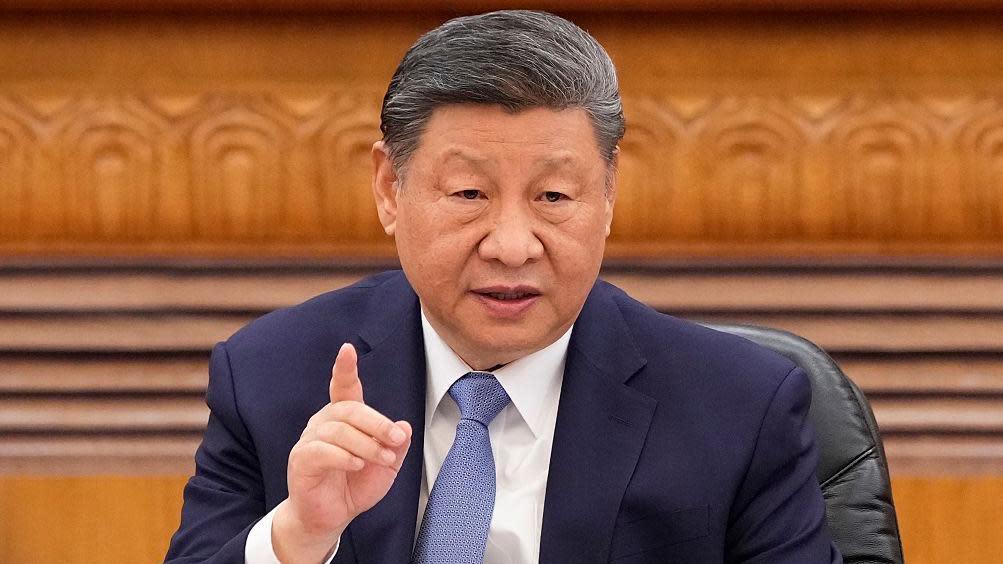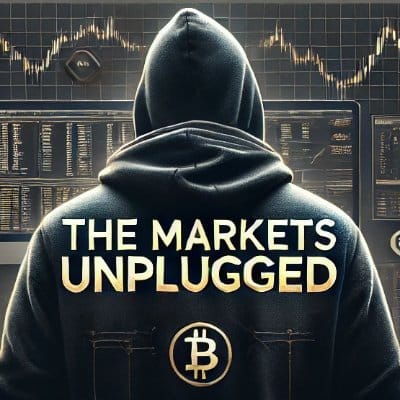The U.S.–China trade war is back in headlines. Fresh tariffs. Fear of global slowdown. Narratives of recession and market contagion. Traders on X screaming, “This is 2008 all over again.”
So where’s the dollar spike?
That’s the punchline: it’s not happening. In a textbook crisis, the U.S. dollar — specifically the DXY index — surges as global capital seeks safety. Emerging markets sell off, commodities slump, and volatility explodes.
This time? Copper’s up. High-yield credit is stable. And DXY looks like it took the day off.
Let’s unpack why this matters — and what the market is actually pricing in.
When Panic Doesn’t Match the Price Action
If this really were a systemic breakdown, we’d be seeing:
- DXY ripping higher, toward 107–108
- Emerging market currencies collapsing
- Funding markets showing stress — SOFR spreads widening, repo spikes
- High-yield bonds (HYG) tanking
Here we go…#Bitcoin #Crypto https://t.co/if3W9aBWhz
— Doc (@DrCrypto47) April 9, 2025
Instead, we’ve got the opposite:
- Copper is up 2%, suggesting industrial demand isn’t collapsing
- HYG remains above 75, signalling risk appetite in credit isn’t gone
- SOFR is stable, meaning dollar funding remains orderly
- DXY is drifting sideways, not surging
This isn’t financial Armageddon. It’s just loud.
Narrative vs Structure: Why the Dollar Isn’t Responding
The dollar index isn’t ripping higher for one clear reason: this isn’t a liquidity panic.
- The Fed is not hawkish — no new hikes on the table
- Liquidity is not evaporating — global M2 is rising again
- Repo markets are functioning smoothly — no signs of collateral scarcity
- No major bank stress — unlike 2023 or 2008, there’s no funding freeze
In short: the fear is mostly narrative, not structural.
Yes, tariffs create headline risk. Yes, they weigh on confidence. But they are not triggering the kind of global margin calls or dollar hoarding that push DXY vertical. At least not yet.
What About the Yuan? A Controlled Slide, Not a Crisis
Some traders pointed to a recent move in the Chinese yuan, interpreting it as a sign of panic or a currency war.
But that’s not what’s happening either.
China appears to be managing the slide, not letting it collapse. This isn’t 2015 redux. The PBOC still has control, and the yuan is softening in line with trade pressures — not collapsing in a free-fall that forces global repricing.
If this were a true currency crisis, capital outflows would accelerate, gold would spike harder, and DXY would respond. Instead, the market is still treating this as an adjustment — not a breakdown.
What Traders Get Wrong About Tariff Panic
Much of the overreaction is coming from short-dated hedging — traders loading up on weeklies and zero-day options, assuming an imminent blow-up.
But the dollar isn’t buying it. Neither are the charts.
Why? Because the broader funding environment doesn’t justify it. This isn’t 2008. It’s not even March 2023. There’s no banking contagion, no dollar shortage, and no policy tightening. The system isn’t seizing — it’s just nervous.
And nervous markets don’t always break. Sometimes they just chop until the next data point.
Conclusion: Not a Crisis — Just a Mood Swing
If this were a real meltdown, DXY would be screaming higher. But it’s not. It’s drifting.
The market isn’t pricing in collapse — it’s digesting headlines. The panic trades are crowded. Traders are hedged to the teeth. And unless something truly breaks — in credit, in repo, in global demand — the dollar won’t spike just because the narrative says it should.
This isn’t a dollar crisis. It’s a macro mood swing.














Discussion